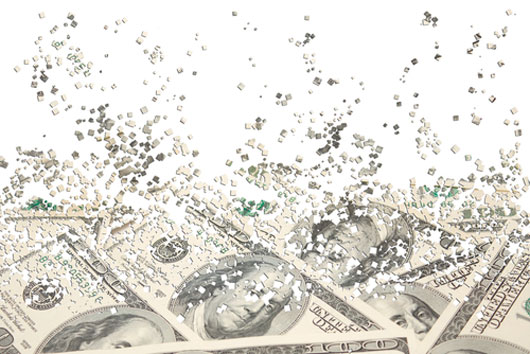
Employees that invest in their company’s 401(k) plan should be able to understand their statements. A new rule from the Labor Department will, for the first time, enable many investors to understand how much of their investment dollars are going up in fees. “I know it’s there and that there’s money involved for me, but other than that I really don’t know how to access how much I have etc.,” says Lupe Zuniga of Waco, Texas. Each person that has money in a 401(k) should have received a statement by August 30 detailing how much money they have invested in which funds and how much they pay for that privilege.
WHERE DID MY MONEY GO?
Quick: what do you pay in fees every year for the 401(k) plan from your employer? If you’re like most Americans, you have no idea. The new AARP survey found that 71% of people invested in their company’s 401(k) plan didn’t realize that they were paying any fees. If you’re wondering how much you’re paying in fees, you’re not alone. Elena Hayes of San Diego says, “Truthfully I glance at it every now and again but I often wish I could have someone tell me how I can use it to its fullest potential.”
In 2006 the Government Accountability Office (GAO) published a report stating that employers were hard pressed to know whether they were offering the best funds to employees, employees had no way to understand what they were being charged, and both employers and employees were probably being charged too much.
TYPES OF FEES
Part of the confusion comes from the different types of fees that can be taken out of a 401(k). The most common one is the “expense fee.” This is fee that’s charged by the 401(k) provider to manage your investments for you. It can be paid as a flat fee or a percentage of the money you have invested.
The other common fee is called a “wrap fee” and this can mean anything. It’s a general fee that is used to cover anything from phone calls and faxes to keeping the lights on in the building. It also doesn’t help that the way the investment firms explain the fees and how they are paid is unclear.
Read Related: How to Save for Retirement Without Noticing
WHY DOES IT MATTER?
Fees are important because a difference of 1% in fees can reduce your portfolio by as much as 28%. Consider this statement from the U.S. Department of Labor:
Assume that you are an employee with 35 years until retirement and a current 401(k) account balance of $25,000. If returns on investments in your account over the next 35 years average 7 percent and fees and expenses reduce your average returns by 0.5 percent, your account balance will grow to $227,000 at retirement, even if there are no further contributions to your account. If fees and expenses are 1.5 percent, however, your account balance will grow to only $163,000.
You will have lost $64,000 due to one little percentage point.
NEW RULES
The new rule from the Labor Department will help individual investors get a better handle on their investment accounts, but you’ll still have to do lots of the heavy lifting yourself. Here’s a closer look at what to expect from the implementation of the new rule:
-
Every investor must receive an initial report by August 30. Keep an eye out for an envelope from your 401(k) provider alerting you of the expense ratios of the funds they offer.
-
401(k) providers have to disclose fund expense ratios in annual statements. That means that they do not have to disclose the expense ratios in quarterly reports.
-
401(k) providers have to disclose the expense rations of each fund. But not only the ones that you own. That means that you might get a report that lists every fund that they offer, instead of only the one(s) that you invest in.
-
They’ll give you the expense ratio, not the dollar amount. If you want to know exactly how much you’ve paid in fees you’ll have to bust out your calculator.
In an effort to secure a comfortable retirement it’s important not to let fees eat away at your hard-earned investment.










